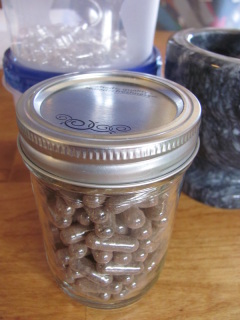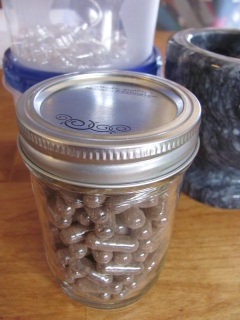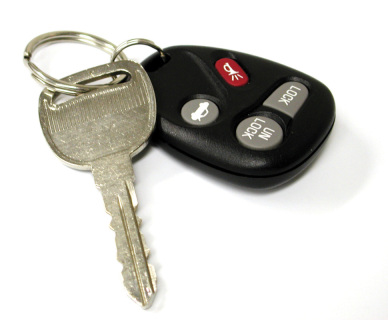The Placenta: the organ of life
Every one of us has been blessed by the gift of this organ, one that seemly appears out of nowhere and as we leave our mothers in birth, it’s work is done and is disposed of with few people ever looking at it or even really recognizing the services it just performed.
The placenta is created when life is created at conception. It grows with the baby and at the end of the first trimester, it takes on the role as the main support system for the baby. It performs a complicated job of passing blood, oxygen and wastes between mom and baby while not mixing mom and baby’s blood.
Another of the placenta’s marvels is its production of hormones for mom and baby. It is known to produce: hCG (human chorionic gonadotropin), hPL (human placental lactogen), hCT (human chorionic thyrotropin), estrogens, and progesterone. Though it’s likely that it has even more functions than that, those of which are waiting to be discovered.
At one time it was thought that the placenta had a limited life expectancy, but research has proven this is a misperception for a mother who consumes a healthy diet throughout her pregnancy which allows her to produce adequate blood volume which then produces a healthy placenta. It is also vital that mom avoids harmful chemicals that will hurt the placenta, things like smoking, alcohol and medications or drugs.
The placenta is literally an organ that gives its all for the life of the baby. When the baby is ready to be born, the placenta’s job is at an end. Once the baby is born, the placenta is expelled from the mother by the still contracting uterus.
For most moms, this is a simple process that occurs within the first 30 minutes after the baby is born. It is examined to assess that all was expelled and either incinerated with the rest of the biohazardous wastes at a hospital or buried in the garden at a home birth. But what if it could do more. What if it has one more service to provide for mom and baby?
The placenta is created when life is created at conception. It grows with the baby and at the end of the first trimester, it takes on the role as the main support system for the baby. It performs a complicated job of passing blood, oxygen and wastes between mom and baby while not mixing mom and baby’s blood.
Another of the placenta’s marvels is its production of hormones for mom and baby. It is known to produce: hCG (human chorionic gonadotropin), hPL (human placental lactogen), hCT (human chorionic thyrotropin), estrogens, and progesterone. Though it’s likely that it has even more functions than that, those of which are waiting to be discovered.
At one time it was thought that the placenta had a limited life expectancy, but research has proven this is a misperception for a mother who consumes a healthy diet throughout her pregnancy which allows her to produce adequate blood volume which then produces a healthy placenta. It is also vital that mom avoids harmful chemicals that will hurt the placenta, things like smoking, alcohol and medications or drugs.
The placenta is literally an organ that gives its all for the life of the baby. When the baby is ready to be born, the placenta’s job is at an end. Once the baby is born, the placenta is expelled from the mother by the still contracting uterus.
For most moms, this is a simple process that occurs within the first 30 minutes after the baby is born. It is examined to assess that all was expelled and either incinerated with the rest of the biohazardous wastes at a hospital or buried in the garden at a home birth. But what if it could do more. What if it has one more service to provide for mom and baby?
|
To save your space on the encapsulator's calender, down load the following form, fill it out and send it in to the address on the form. If you have any questions, feel free to call: 320-493-5110 or e-mail [email protected]
|
Using Your Own Hormones From Your Own Placenta Prevent Depression
The placenta is the organ responsible for a significant portion of your hormone production in your pregnancy. When it is producing hormones in pregnancy, your body's organs and glands which usually do that work, will stop or slow production and allow the placenta to carry the weight of that work. After the birth of your baby and the release of the placenta, your body needs to once again produce the hormones necessary for proper daily function. However sometimes the body doesn't immediately pick up the slack, so to speak, and the hormone production in your body is temporarily low, which manifests itself as postpartum depression in many different ways. By ingesting the placenta, you help your body maintain important hormone balance until it is able to do it on it's own. Placental encapsulation is when your placenta has been processed - washed, steamed, dehydrated - and then turned into a powder that is then placed into capsules that can be ingested like a vitamin. For only $175, the work is done in your home, completed in 2 separate visits allowing you a postpartum experience that is one of joy and a positive experience!
Encapsulation Service Throughout history, humans have ingested the very placenta that sustained their baby’s life for nine to ten months in the womb. Only in the last 100 years has this practice dwindled to an act that, if mentioned, brings about reactions of general disgust. Whether ingesting the placenta is palatable or not, the medicinal benefits of it should not be overlooked. The placenta is packed full of hormones from its job inside. Once outside mom, it still contains those very hormones - hormones that could continue to be of utmost importance to mom and baby. To ease the squeamish thoughts of roasting a placenta for dinner, modern birth enthusiasts have cleverly developed a method of turning an organ full of potential into a capsule, packed full of maternal benefits. The process entails the steaming of the placenta, followed by dehydrating it, crushing it into a fine powder and finally placing the powder into capsules that mom can swallow, like a vitamin, ingesting it, but not truly eating it. But why would mom want to do this? What are the benefits? Ever heard of postpartum depression? Of course you have, everyone has. The hormones from the placenta are designed by the body, for the body, and work well with your body to balance that crazy hormonal upheaval of postpartum helping mom avoid the sadness of postpartum depression. But it doesn’t stop there, it also helps with mom’s milk production. What’s key to making mom’s milk? Hormones. The capsules offer an added boost of hormones, aiding the body in it’s production. The capsules, if kept in storage properly, can also aid the menopausal woman. Once again, menopause challenges are generally thought of as a time of hormonal imbalance. The capsules, packed with hormones, relieves mom of this imbalance. The placenta has even been shown to help mom with postpartum hemorrhage, of course this would occur before the placenta has been encapsulated. The placenta, it truly is an organ that keeps on giving. |
Procession Options
Encapsulation Options:
Raw - $225 –The placenta is rinsed off, drained partially of blood and the membranes and cord removed. Then the placenta is sliced into very thin slices, placed on the dehydrator shelves and dried like jerky. Once dried completely, it is ground into a powder and placed into capsules. Since there is no cooking prior to the steaming, they can be very strong. Steamed - $175 – With this method, the placenta is also rinsed off, drained partially of blood and the membranes and cord removed. The placenta is then steamed over very low heat with jalapeño pepper, lemon and ginger. Once steamed, it is ground in a blender, placed on the dehydrator shelves and dried. Once dried completely, it is ground into a powder and placed into capsules. These might not be as strong as the raw form but have the benefit of the foods infused into the placenta. Tincture $50 (work only done in addition to encapsulation: To extend the life of the placenta, a tincture is created from a small chunk. It is placed in a jar with vodka and is left to sit for 6 weeks, being shaken daily. At the end of six weeks, the placental piece is removed, the liquid strained and placed into a bottle with a dropper cover. This can be used for both mom and baby. Mom will use it as she needs to work through postpartum challenges, low milk production and low energy. Baby can use it when they are sick, teething, or simply making transitional changes in their life. This option is only available with one of the encapsulation options. Additional Options: You can also make the decision to do part of your placenta in any or all of the methods listed about for an additional fee. Finally, if you have a specific area that you feel you would really like help with we can customize your capsules when we fill them with dried herbs or essential oils for an additional fee. | ||||||
Jennifer Davis . Labor For Love Birth Services . [email protected] . 320-493-5110








